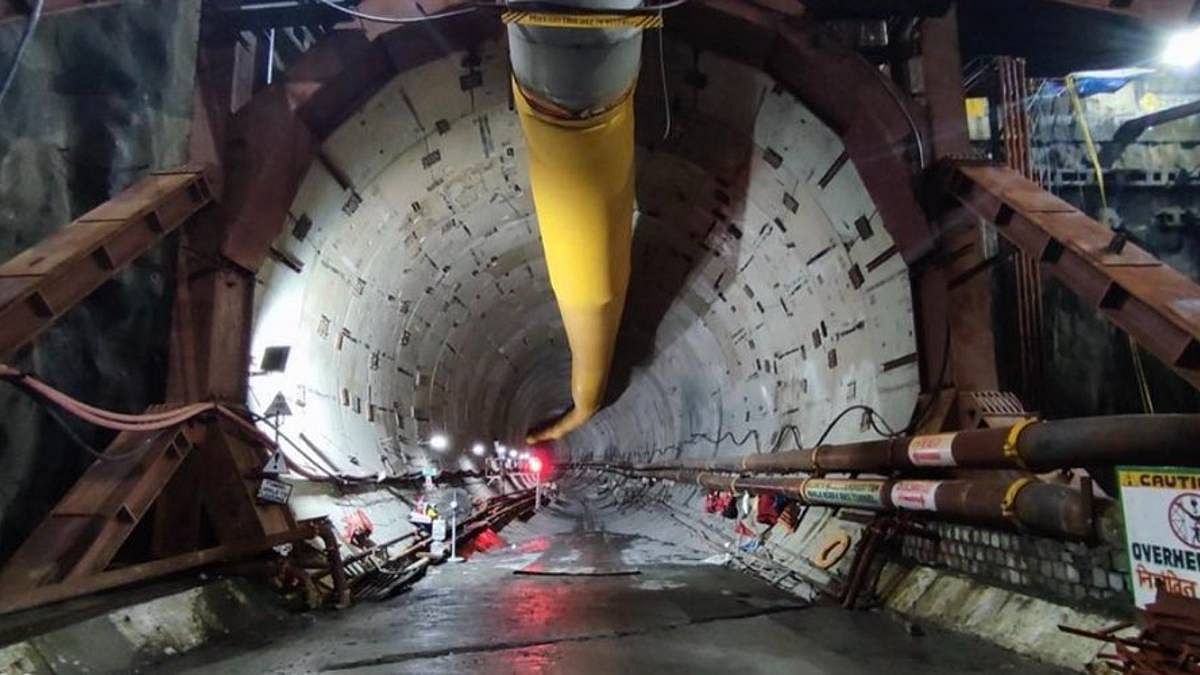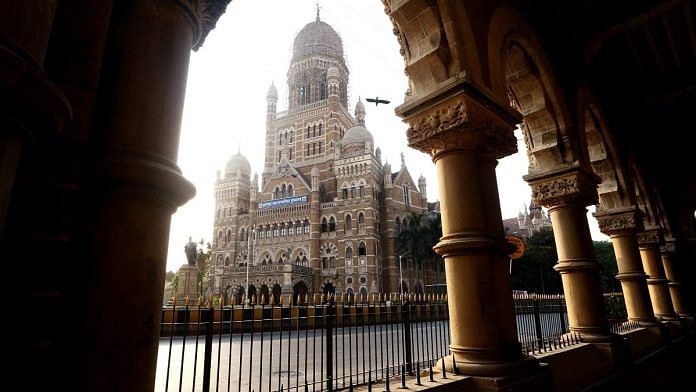Mumbai: In 2017, Malishka, a popular radio jockey with a private FM station, released a viral video mocking the Brihanmumbai Municipal Corporation’s (BMC) monsoon preparedness with a song, “Mumbai, Tula BMC var bharosa nahi kay? (Mumbai, don’t you trust the BMC?)”, elaborating on the city’s potholed roads and annual floods.
While nobody from the BMC admitted it on record, the viral video is believed to have hurt the Shiv Sena-ruled civic body to such an extent that it sent Malishka’s mother, Lily Mendosa, a notice for mosquito breeding in her house.
On record, the BMC said it did not know it was Malishka’s house and the breeding was found during a routine inspection. But, a few corporators from the ruling body and members of the civic administration spoke in hushed tones about how the action was no coincidence.
Pockmarked roads and knee-deep water is an accurate description of every Mumbaikar’s reality during the monsoon every year. The BMC’s action, however, perhaps came from a sentiment of overwhelm.
Organised into 24 administrative wards with 227 directly-elected public representatives and a population of 1.28 crore to serve, the BMC has a wide range of duties — from managing Mumbai’s sanitation, sewerage and water supply to constructing and maintaining roads, parks, markets and major hospitals.
Moreover, the corporation has also taken up complex capital and time-intensive showpiece projects such as the Brimstowad that involves an upgrade of storm water drains, a coastal road project by reclaiming land in Mumbai for the first time since the 1991 Coastal Regulation Zone notification, and an east-west road project involving tunnels. In the past, it has also built a dam to augment Mumbai’s power supply, and is now planning a hybrid hydro and solar power plant on it.
From Tuesday, this behemoth came under a single administrator for the first time in nearly four decades, with the term of the publicly elected general body lapsing on 7 March.
Also read: Rs 17,000 cr revamp for Mumbai’s British-era BDD chawls: Residents hopeful, planners have doubts
‘Corporators will become regular citizens’
With polls to the Mumbai civic body delayed due to the reorganisation of ward boundaries, the Uddhav Thackeray-led Maha Vikas Aghadi (MVA) government of Maharashtra approved an amendment to the Mumbai Municipal Corporation Act last month, to facilitate the appointment of an administrator.
The polls are also likely to be delayed due to the Supreme Court’s scrapping of the Other Backward Classes quota in local body elections, and there being a political demand to restore it.
According to the state cabinet’s decision, municipal commissioner Iqbal Singh Chahal will act as the administrator.
A BMC official who did not wish to be named said that different committees of corporators that used to discuss and recommend proposals for approval to the civic body on matters such as education, land use and so on, will cease to exist.
“The BMC had an administrator once in 1984-85 for a year. From Tuesday, corporators will become regular citizens. They won’t have access to their offices, they won’t be able to use their letterheads. If they wish to bring something to the administrator’s notice or get some particular work done, it becomes the administrator’s choice to give them a hearing, and not a compulsion,” the official added.
A total of 15 civic bodies for which elections were to be held this year will have administrators. But the BMC stands out due to its sheer size, expansive budget, the kind of multi-crore projects it undertakes, and the magnitude of the population it governs.
Budget higher than eight states, plush reserves
Madhav Pai, executive director of research body WRI India, told ThePrint: “Cities in Maharashtra and Gujarat are governed by municipal Acts created before Independence. Corporations have a lot of power. In Bangalore, for example, subjects such as water and transport are handled by the state government. In Mumbai, these are with the BMC.”
“Because land value is so high in Mumbai, over the years, property tax revenue for the BMC has been quite sizeable. As a result, the BMC has money, which drives good decentralised ward-level governance and good staff as well,” Pai added.
In the ongoing fiscal year, the BMC’s income from property tax is expected to be Rs 7,000 crore.
The BMC’s 2021-22 budget of Rs 39,038.83 crore was bigger than the budgets of eight state governments, namely Tripura, Nagaland, Mizoram, Meghalaya, Manipur, Arunachal Pradesh, Sikkim and Goa.
It’s 2022-23 budget, approved last month, is the highest ever so far, Rs 45,949.21 crore.
Over the years, the BMC’s share of capital expenditure in the total budget has been on the rise as it spends more on creating and maintaining public infrastructure.
Allocation for capital expenditure has surged to 49 per cent of the budget in 2022-23, from 19 per cent in 2016-17. The BMC’s actual spend on capital expenditure also surged 114 per cent to Rs 8237.13 crore in 2020-21, from 3850.46 crore in 2016-17. In the ongoing fiscal, the capital expenditure is expected to shoot up further to Rs 16866.48 crore.
In his budget speech, Chahal said: “Considering the increasing liabilities of ongoing projects, special projects and obligatory duties, huge amounts will be required in the future to meet capital expenditure as well as revenue expenditure. Also, there will be need of sizeable funds for upkeep and upgradation of these facilities in the future.”
Taking up of capital-intensive works has been possible for the BMC due to its high pile of reserves, which Chahal said have now been linked to infrastructure projects to “ensure that reserves are funnelled towards capital expenditure to improve infrastructure for citizens in Mumbai”.
According to the 2022-23 budget presentation, the BMC has available reserves of Rs 55,807.68 crore.
Also read: BJP MLA slams Mumbai civic body for setting up welfare centre for dabbwalas far from railway station
High-profile, multi-crore projects
The BMC’s most ambitious and high-profile project is currently a coastal freeway, which it is constructing from Marine Drive in south Mumbai to the Worli end of the Bandra-Worli sea link.
The 10.58-km coastal road, being built at a cost of Rs 12,950 crore, involves a unique undersea tunnel, touted to be the country’s first. To make this possible, the BMC has procured India’s biggest tunnel-boring machine, which it has named ‘Mavala (soldier)’. The BMC is reclaiming 111 hectares from the Arabian Sea to make the coastal road and open spaces around it.

This year, the corporation’s highest budget allocation was for the coastal road project, for which it set aside Rs 3,500 crore.
The civic body has also made large allocations for the Goregaon-Mulund Link Road project and the Mumbai Sewage Disposal project involving Rs 1,300 crore and Rs 1,340 crore, respectively.
The Goregaon-Mulund road project, a key east-west connector, involves constructing new roads, widening existing ones, building flyovers as well as 4.7-km twin tunnels under the ecologically sensitive Sanjay Gandhi National Park. It also involves rehabilitating more than 700 families and 50 commercial structures.
The Mumbai Sewage Disposal project, estimated to cost more than Rs 16,000 crore, involves setting up seven sewage treatment plants of a cumulative capacity of 2,464 million litres a day.
Besides this, the BMC is in the process of setting up a desalination plant.
Political power centres
Urban planner Sulakshana Mahajan told ThePrint that “the BMC almost functions like an arm of the state government”.
“All its major policies go to the government for approval. Politically, the BMC is seen as important as it helps in getting a stake in the functioning of the state government,” Mahajan said.
She, however, added that the rights of the corporation are limited, with the state being the final authority on important policy issues. She cited how, in 2015, the Devendra Fadnavis-led Maharashtra government had scrapped the draft Mumbai development plan prepared by the BMC and appointed a committee to formulate a new one.
Another Mumbai-based urban planning expert who did not wish to be named said that things are smooth if it is the same political party dominant in the state government as well as the BMC.
“When that has not been the case, political parties have tried to build their own power centres in Mumbai. They have created alternative authorities to the BMC, weakening the civic body, so that they can also have a grip over Mumbai’s development,” he said.
He gave examples of how bodies such as the Mumbai Metropolitan Region Development Authority (MMRDA) and the Maharashtra Housing and Area Development Authority (MHADA) were created in the 1970s, and later strengthened over the years.
Both bodies have been appointed as special planning authorities in different areas of Mumbai, with the MMRDA having control over plush real estate in the Bandra Kurla Complex and Wadala, among other places, and MHADA having the authority to approve building plans on its land.
Moreover, the MMRDA maintains several major roads in the city such as the arterial Eastern and Western Express Highways.
Mahajan said: “Whenever there’s been a clash between the BMC and the state government, the latter has given bodies such as MMRDA and MHADA more powers as a solution. This kind of fractured governance is an extremely poor organisational structure for a city like Mumbai. The huge budgets then don’t make any difference.”
Even in the RJ Malishka episode of 2017, Shiv Sena members had cited these jurisdiction wars in the BMC’s defence.
Two leaders of the Aaditya Thackeray-led Yuva Sena had urged then BMC commissioner Ajoy Mehta to file a Rs 500 crore defamation suit against the radio jockey. They said she was unfairly blaming the BMC for problems that were not under the civic body’s jurisdiction.
(Edited by Nida Fatima Siddiqui)
Also read: Mumbai Police files complaint over false IT raid on BMC commissioner Iqbal Chahal






